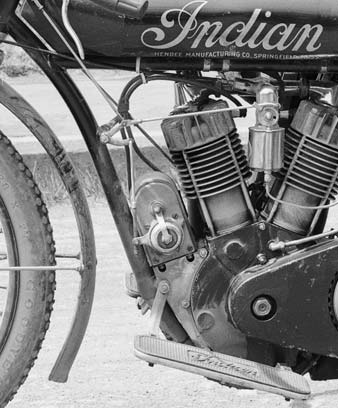Story summary
Early motorcycles
Motorcycles were invented in the late 1800s, when people started putting engines on bicycles. The first motorised tricycle was brought to New Zealand in 1899, and people began to build their own motorised bicycles.
Useful transport
Sidecars were added to bikes, and could carry a passenger or tools. Motorcycles were cheaper to buy and run than cars, so they were popular with travellers and tradespeople, including butchers, bakers and plumbers. Mary Watson of Marlborough used her sidecar to carry a washing machine to farmhouses to do their laundry.
Origins
At first, most imported motorcycles were from the UK, with some from the US. From the 1960s, Japanese brands like Honda, Suzuki and Kawasaki became more popular.
Racing
Early on, motorcycles were raced on beaches, and on grass tracks at horse racecourses. From the 1920s, dirt-track racing (speedway) began. Motorcycles are also raced on roads and off-road tracks.
Today, the Brass Monkey Rally, held in Central Otago in winter, is New Zealand’s best-known rally.
Building bikes
Many New Zealanders have built or customised motorcycles. They include:
- Cecil Wood, who designed and built an engine-powered bike in the late 1890s
- Richard Pearse, who also built one of the world’s first aeroplanes, and may have been the first New Zealander to fly
- Burt Munro, who set world speed records in the US on his customised bike, and whose story was told in the movie The world’s fastest Indian
- John Britten, who designed and built a Superbike, the Britten V1000.
Motorbike culture
In the 1950s, young men who parked their bikes outside milk bars were known as ‘milk-bar cowboys’. Some got in trouble for racing on city streets. It was unusual for women to ride motorcycles, but some rode pillion (sitting behind a male rider). Motorcycles became associated with rebellion and gangs.
Today, many people belong to clubs and enjoy riding their motorcycles in groups.
Laws
At first, people worried that motorcycles would scare horses. Riders were fined for speeding or riding on the footpath. Later, riders and passengers had to wear helmets.
Safety
Riding a motorcycle is much more dangerous than driving a car. In an accident, a rider is protected only by their clothes and helmet – so they often wear heavy leather clothing. In 2007, less than 3% of New Zealand’s vehicles were motorcycles, but 10% of people killed on roads were bike riders.





